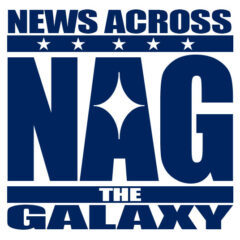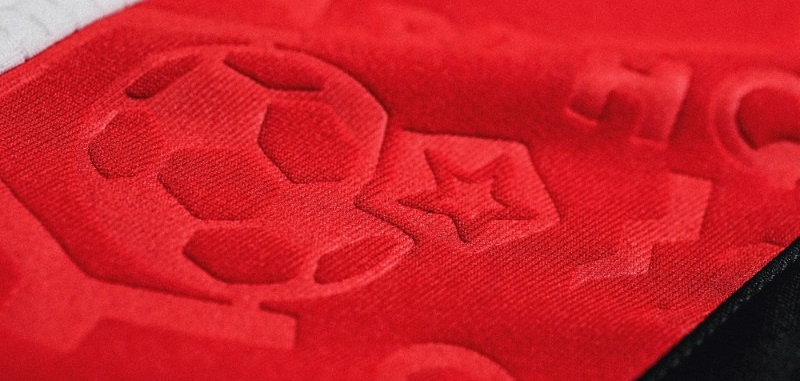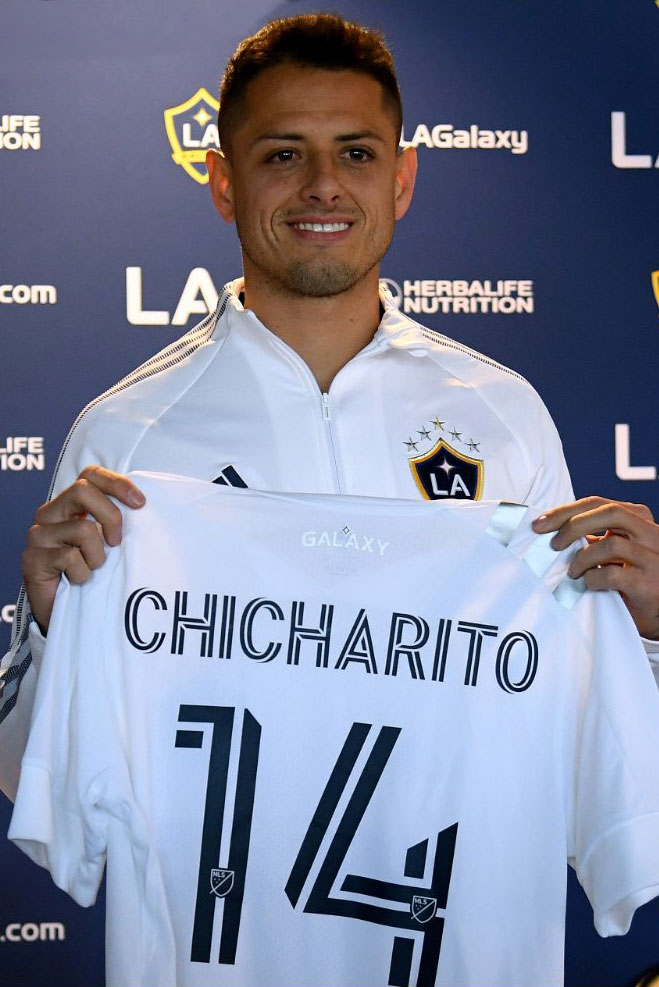The Fascinating True Story Behind the 2021 Community Kit and the “Amor Eterno” Video and Their Impact on Los Angeles Galaxy Lore
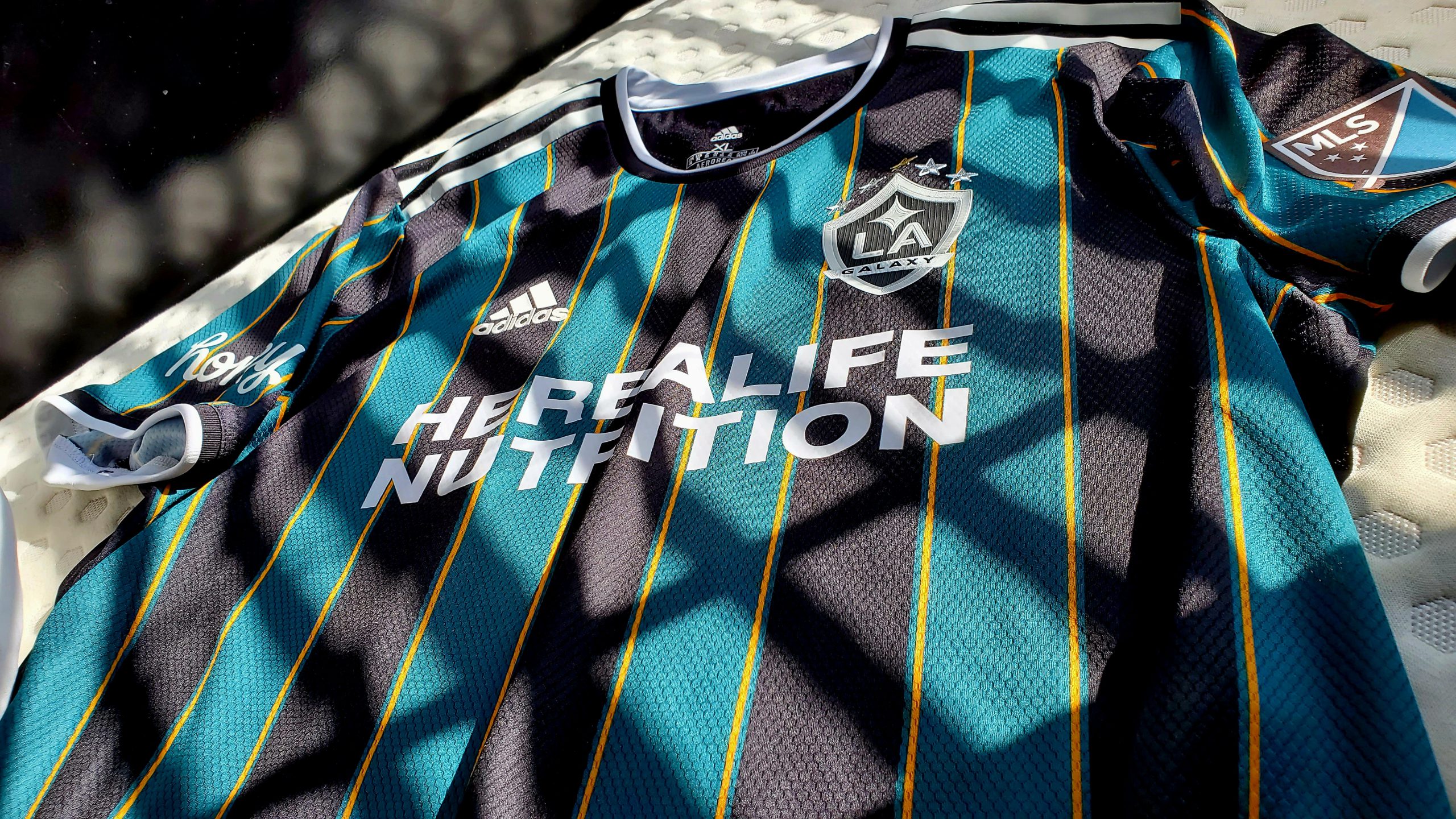
A SOUTHERN CALIFORNIA STORY
By Edgar Zuniga
This is a story about the now-legendary Los Angeles Galaxy Community Kit of 2021 and the esteemed “Amor Eterno” animated video and how they celebrated the unique Galaxy supporter culture and early years of the most successful club in Major League Soccer history.
Who can forget all the misery and pain from 2020, from the constant threat of the COVID-19 pandemic smothering everything to the complete disappointment of the Los Angeles Galaxy season? Things ended so bad for the Gs that even play-by-play announcer and eternal optimist Joe Tutino and color commentary partner Cobi Jones lamented the team’s lack of heart and respect for the Galaxy badge live on air.
Although the club did not finish dead-last in the overall table, winning only two of their last 13 matches was particularly damning for then-manager Guillermo Barros Schelotto, who was dismissed with three matches left in the season.
After the smoking crater of 2020, it was time for a renaissance. Things quickly went into motion when it was announced in January 2021 that Original G Greg Vanney would leave Toronto FC to manage the club where he began his career in ’96. TFC was Vanney’s first foray as manager, but “Greg the Builder” turned the Reds from a woeful doormat that had never qualified for the MLS playoffs to MLS Cup Champions in 2017.
Many were hopeful he could do the same with a Galaxy franchise that had lost all sense of direction and was rapidly being overshadowed by the noisy neighbors up the road. While 2021 ended with more “Decision Day” frustration, with Galaxy barely missing out on the playoffs, the team’s performance was a step in the right direction.
But, before the 2021 season began, there was still so much uncertainty in terms of the ongoing pandemic. It was unclear whether or not fans would be allowed back in stadiums that season or any time in the near future.
Members of the Galaxy community routinely expressed their desire to attend matches once again in-person and congregate with friends and family. Everyone missed the gameday experience, from tailgating and sharing food and drinks to cheering on the club and celebrating goals and a home win.
But, despite all the despair and isolation brought about by the pandemic, the Galaxy community, particularly on social media, was more united than ever.
In February 2021, there was already growing anticipation about the newest Galaxy kit, which was preceded by the inspirational “Galaxy Community” campaign, featuring a series of vignettes celebrating Galaxy alumni and supporters from every corner of Greater Los Angeles.
While the videos were uplifting, nothing prepared us for the magnificence of the Galaxy Community Kit, which was unveiled in a video capturing the reactions of different supporters and Galaxy alumni unboxing the jersey. With its vertical stripe design in black, tech green, and collegiate gold, the kit was so stunning that everyone radiated with approval and even prompted Galaxy legend Kevin “El Gato” Hartman to exclaim, “That’s what I’m fucking talking about!”
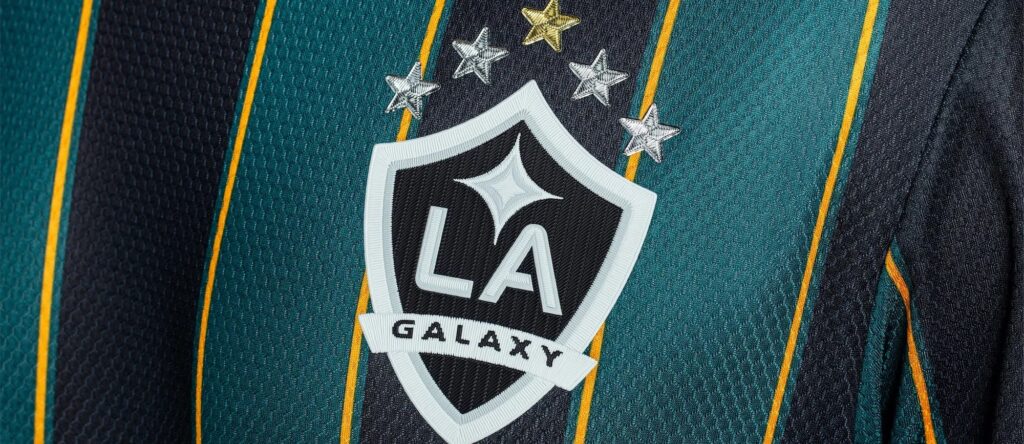
It was old-school meets new-school with unparalleled flavor. The kit was heralded as one of the best in the world—an instant classic—and became a source of pride for Galaxy supporters far and wide.
Along with the unveiling of the Community Kit, the club also released a poignant animated video entitled “Amor Eterno: A #GalaxyCommunity Story,” featuring three generations of Galaxy fans, which was produced by Ataboy Studios and directed by Vikkal Parikh. “Amor Eterno” was met by overwhelming praise by Galaxy fans, who were humming along to the soundtrack, featuring the Beiba Remix of “Bailar Con Mi Corazon,” a Martin Carlberg cover of the original, by artist Telmo Telmo.
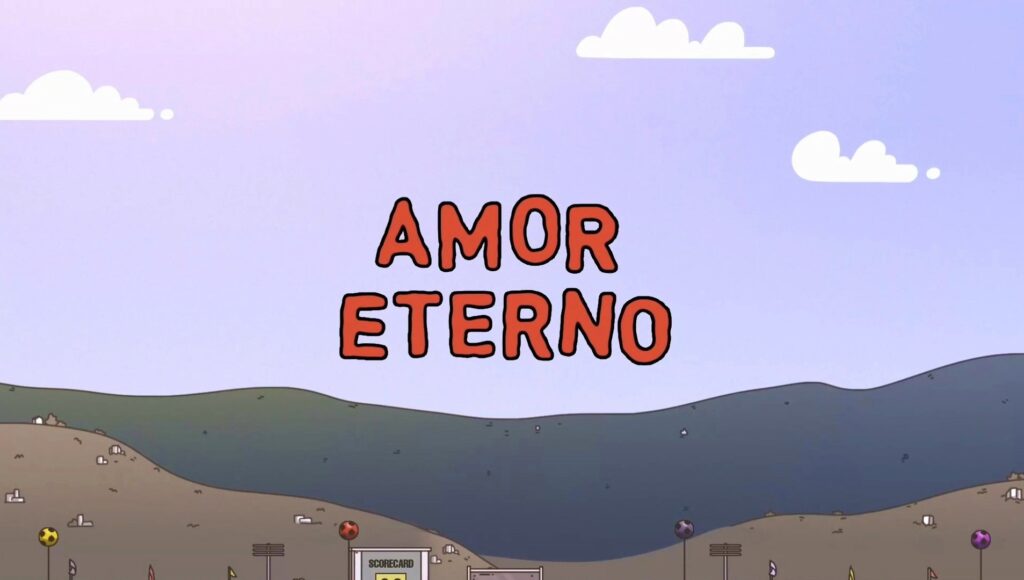
While there was an entire team that worked hard to put together the successful “Galaxy Community” campaign, the idea for the Community Kit came from a spark of inspiration to Chris Thomas, who is no longer with the club but excelled as Senior Director of Digital Media, Marketing, & Fan Engagement. In the spring of 2021, Chris kindly agreed to share the story of how the Community Kit and the “Amor Eterno” video came to be.
Edgar Zuniga: How did you end up working for the LA Galaxy?
Chris Thomas: It was sort of a random journey. I grew up in Southern California, a diehard soccer fan. I went to school out in New York. Left New York after school and moved to L.A. and my first sort-of grownup job was with the Dodgers for a season. I was always a soccer fan and always wanted to work in soccer. So, I applied for a job and worked for the Galaxy for a year or two, from 2008-2010, right around when Bruce [Arena] started up until halfway through the 2010 season. I was doing proto-supporters stuff for the first year or two. I was there at the early stages of ACB, helping them get off the ground. ACB started in 2008 and I joined shortly thereafter. In my first game as an employee, I saw ACB and I was like, “Who is that? What is that? Let’s have more of that!” I was kind of their main front office liaison. Did that for, like, a year and a half. I quit the Galaxy because I didn’t think there were enough opportunities for growth at the time. I went back to grad school in New York and worked for a team out there. At the end of 2013ish, I was invited or offered a position to come back, originally doing social and digital media right after the end of the 2013 playoffs. I was doing that throughout the 2014 season, which was awesome. I took over the marketing department and through those efforts, a year or two after that, started or formed what we call our Fan Engagement Department, which is the group that spearheaded launching Victoria Block, which was a big project. I currently oversee our PR Dept., Marketing Dept., Digital and Social Media content, website, fan engagement (which is Victoria Block and LARS), and broadcasts.
EZ: Tell me about your background in digital media and marketing and what inspired you to pursue this profession.
CT: When I moved back to New York and went back to school, I did social for the New York Cosmos back then. So, I’ve been doing socials since 2010, which is when I transitioned fulltime to doing digital and social. It’s a good question…why? I just enjoyed it. I enjoyed engaging with people. I enjoyed building community and fanbase. When I started doing it, it was really, really early in that process. I helped launch the Cosmos Twitter page, YouTube, Facebook. It was before you had that stuff. So, I enjoyed that aspect of it. It was a lot of fun; you could be really creative and get away with a lot of stuff. It was a good outlet for my creativity. I really enjoyed engaging with fans and being that direct voice to the fans and taking their tone and adopting it and being that voice of the fans through the club’s social.
EZ: Wasn’t Cobi Jones involved with the Cosmos at the time?
CT: Yeah, it was an interesting period. It was a very, very cool experience. But it’s hard to describe unless you were there at the time because it was very unique. We were more of a lifestyle brand than an actual soccer team at first. It was a lot of fun, and I learned a ton doing all of that. It was very weird at the same time. I was there for three years and there were a few different phases of it with a few different owners. But we had a cool period when Gio Savarese was our head coach. They put together a real interesting, good team. Marcos Senna, a European Cup winner, was on that team. I don’t think there will ever be a situation like that.
EZ: As a creative, the challenge is to always feed the beast. Where do you draw inspiration for graphic arts and digital media?
CT: All of it is about the fans and the community you want to build. I want a club that Galaxy fans are proud of and represents them. It’s not always perfect and, I’ll admit, I’ve made mistakes. I think, right now, more than ever, there’s a real sense of community among Galaxy fans. I take inspiration from the creativity of Galaxy fans, whether it’s the stickers they make, the merchandise, the tifo, the flags, the social graphics, the memes. I love it. I love the community right now. I’ve always loved the Galaxy community. It’s really all about them and celebrating them. That’s where all my focus is on; celebrating the Galaxy community and helping to grow and nourish it, recognizing fans, and all they are doing. But, besides all of that, I have a lot of inspiration outside of soccer, whether it be music, visual arts, and stuff like that. Sometimes, I have the most fun when I can combine those. We did match posters a few different times—that’s always been really fun for me.
EZ: You keep mentioning how important the Galaxy community is and we saw that in the marketing campaign leading up to the launch of the Community Kit. How did that all come about? Did you sit in a room and decide, “This is what we’re going to do,” or was this hashed out over time?
CT: It was a combination of both. I’ve been working on that jersey for two years. That jersey—that design—was really a celebration of Galaxy fandom. Walking around the stadium, as many people had the ’97 jersey as much as the current kit, a lot of times. It was also a kit that we hadn’t done. We’ve done a version of the ’96 kit. But this ’97 or the ’98 kits are fairly popular among Galaxy fans. So, it seemed like a perfect opportunity to bring that back and celebrate them, and to give them something that, it seemed, they all really wanted. Vertical stripes are pretty in nowadays. The design, itself, felt very modern while also being very true to a popular design among the Galaxy community. That was always the intention. We wanted a version of the ’97 kit. Through the process, we lucked out and Adidas came back with something that was exactly what we wanted. It was an easy process, back and forth with them. Then, once we handled the look and feel, it took a while to wanting to call it the Community Kit and really honing in on how we’re going to celebrate Galaxy fans through it. Once we realized we wanted to call it the Community Kit, then it was really easy, really fun to build the marketing campaign from that, exploring different avenues of Galaxy fandom across Southern California.

EZ: The unveiling of the Community Kit coincided with the arrival of Greg Vanney and Dan Calichman to the coaching staff, who, along with Kevin Hartman, were part of the ’97 Galaxy team. This was like a renaissance for L.A. Galaxy. The timing seemed perfect with the launch of the Community Kit. But, then COVID-19 hits and you couldn’t have that community there. What was the most difficult challenge of marketing throughout the pandemic?
CT: On a personal level, one of the things I enjoy the most working in sports is celebrating a win in front of a great atmosphere at home with fans and coworkers. That element was different, and, obviously, the team’s performance wasn’t great last year (2020). There was less to celebrate. That is such an emotional driver for me, so, not having that was challenging on a personal level. On the marketing side, not having fans and that driver to everything you do was challenging, in terms of not being able to record in front of fans, having the players play in front of fans. It felt off and something was missing. From a logistical standpoint, it’s very challenging to do a photoshoot or video shoot in a COVID period. Around the Community Kit, my teams did an incredible job with the logistics and everything in terms of the media, with 12-15 photo/video shoots. So many cool different pieces to the marketing campaign that all had their own challenges around filming and COVID compliance that we were able to navigate. So, it was a cool team effort with live video and photo and the marketing team did an incredible job bringing the Community Kit to life with the marketing campaign.
EZ: At least on a personal, I felt that this marketing campaign was exactly what we needed. Everybody was feeling down about not being able to attend games for more than a year. Then, you get a week of these videos—this marketing campaign—that reminds you that there’s a sense of community that wasn’t lost—that it’s still there. Seeing the videos is like going to a movie theater and seeing a trailer for a movie you really want to see. You know it’s coming out soon. You feel excited and have a sense of anticipation, knowing that you’re going to get to do this again pretty soon. In that aspect, I think you did a fantastic job.
CT: My team, the Galaxy marketing, social/digital content team, fan engagement team did an incredible job. Those vignettes were a lot of work with a lot of planning. I had pretty high hopes because I knew the jersey looked really good. I recognized it was a perfect time to celebrate the Galaxy community. Yeah, it was a challenging time, but I was blown away by the Galaxy community throughout all of this. Whether it was fans making banners for frontline workers early in the pandemic or Galaxy fans making custom masks. We had a couple of drive-through events. Both had just awesome attendance. It was challenging, I told you, the V Block stuff was for me, personally. Almost 10 years in the making and we have one game and then that’s all we have. That first game was incredible, and it was the start of something. But, the community and that spirit of creativity and the sense of togetherness, passion for the team, was there throughout the entire time. It was about celebrating the work that everyone had already been doing and highlighting that aspect of it. It’s funny how these things came together.
EZ: We saw the hashtag “Galaxy Community” as the theme you guys used. Were there any themes or hashtags in mind that were in consideration?
CT: Not really. We were focused on the Galaxy community for a while. The naming of the Community Kit was fairly early in the process, so it’s always been about that. I didn’t want to call it the “’97 Kit” or the “whatever kit.” We always honed in on the community aspect and celebrating Galaxy fans.
EZ: Was it a coincidence that some other teams like Dallas, Philly, and Kansas City went with the “Community Kit” theme?
CT: It was a bit of a cheat by us. Without getting too into the weeds, Adidas and MLS rename the kits, so it’s not your home and away or primary and secondary. So, the secondary kit for all teams was renamed to be each team’s “Community Kit.” MLS kinda faxed us the designation on it. We had already been talking about naming it and then got word of that and we’re like, let’s just own it, and just leaned into it. We felt so confident about the story we could tell that I wasn’t worried about what they were going to do with theirs. For us, we felt so strong about our own story that we felt fully confident embracing that.
EZ: I felt that out of all the teams that used the “Community Kit” theme, Galaxy was the only one that nailed it and took it to heart and the Galaxy community was all about it. That is so hard to find, when you have everything come together like that. You could see it. You could feel it.
CT: It’s an interesting balance for me. I’m a history nerd. I majored in History. I worked for the New York Cosmos because I was obsessed with soccer history. I love it. I love and respect the Galaxy history but also, working in marketing, I don’t want the Galaxy to be something that used to be good. So, it’s challenging because there were times when we leaned more into the history stuff more than we usually do, because I know how much it means to people, but I was cautious about overdoing it. Because it is such a glorious history, if the team isn’t doing well in the present, it’s not a hindrance, but I didn’t want to be over-reliant.
EZ: It seems like everybody is leaning a lot on nostalgia these days. Rebooting franchises, remaking old films, re-releasing old stuff. You get to a point where nostalgia becomes a crutch. You don’t want it to be that. You want it to be a celebration of something and that’s about it. It’s supposed to be organic.
CT: I do think that a lot of things came together nicely to make this riff on our history impactful for people. Unless you’re a Galaxy fan, you wouldn’t have known the ’97 kit. It’s not as famous as the ’96 kit. It was a good balance and fun take on our history but felt very modern. It didn’t feel too backwards looking.
EZ: I felt you accomplished two things with this kit: You put a modern twist on a classic uniform, but, at the same time, you also shed light on a classic uniform that is now becoming a collector’s item.
CT: That’s pretty special. There are few teams in MLS that have that.
EZ: I’ve been a fan since ’96. I was there at the first game and spent all my money until I couldn’t afford to go to games anymore. I went to a few more games here and there during that first season. Then, in ’97, I got a press pass and that solved that. Seeing the “Amor Eterno” video brought back a flood of nostalgia and memories and made me very emotional. For that, I want to personally thank you. What was the inspiration for that video and how did that come together?
CT: The generational aspect of Galaxy fandom feels relatively unique in MLS and is very special. There are obviously other MLS team that have that, but I’m biased, and I don’t think any of them have anything like what the Galaxy has. We wanted to tell the story of—at this point—three generations of Galaxy fans. Talking to a lot of people, there was a shared experience of going to games when you were young, and now, you’re a bit older and you’re taking your kids to a game. That seemed like a shared experience we wanted to celebrate. So, this kit was a vehicle that allowed us to tell that story. Adam Serrano was on my team and did an incredible job of bringing that video to life in terms of the details, and the sights and sounds, and the things that would make that video really true to that experience. I was very happy and proud of that video. If there was one piece of content that I’m most proud of, that is pretty high up on the list, is that this video tells the story of what being a Galaxy fan is for a lot of people. The ’90s was such a vibrant time and you have Pasadena and so many cultures coming together around these games. It’s really special. But it’s sort of a hard story to tell sometimes, so, I’m glad that it came across in that animation.
EZ: I wanted to ask you about the story in the video. I was gauging the reaction to the video across Twitter and social media, and I remember there were a few young women that said, “This video speaks to me,” and one of them added, “I see myself back at the Rose Bowl! This is my story!” Then, toward the end of the video, a few people remarked that there was a same-sex couple, and this seemed to resonate with a lot of people. It’s something that nobody really sheds a light on but the LGBTQ+ community has always been a very important part of Galaxy fandom. You look at Galaxy supporters groups now and it’s an eclectic mix of cultures and different people from different walks of life and I thought that having the same-sex couple in the video was appropriate. It didn’t feel forced. Everything felt organic. And, seeing that there, it made me smile because it felt natural. How did having the same-sex couple in the story come about?
CT: It wasn’t really much of a thing. It wasn’t really discussed, to be honest. We wanted to tell the story of some of the fans that our group had gotten to know. There are a few fans, specifically, that the video references their story. It felt pretty natural and authentic to us. Again, it was just about honoring Galaxy fans and honoring the Galaxy community. There really wasn’t much of a discussion about it.

EZ: Were there other stories that you had considered for the video?
CT: It was always going to be multi-generational. We wanted to tell a story about generations of Galaxy fans. Again, we think that’s such a special component of Galaxy fandom. We knew a much larger story that we wanted to tell but it needed to be trimmed down for runtime. We just couldn’t do a 5-minute video. We needed to capture a lot of details that we wanted to include, whether it be the character wearing a jersey to school, and stuff like that. We had a bigger story to tell but had to cut it down.
EZ: How did you choose the song for the video?
CT: That was, again, Adam Serrano. He was instrumental in wanting to pick that sort of rockabilly genre. He was the one that led that decision-making process. It worked fantastic. It’s not a type of song that is commonly used for a sports piece like that. I’m glad people liked it.
EZ: I feel this video deserves an award. Now that you mentioned there was a larger story to tell, I think it would be so cool if there was a short video or film that somebody produced because I think the reaction would be very positive.
CT: Yeah, I hope we’ll be able to tell more of these stories. We tried it a little bit last year (2020), with the “Stories of ’96.” We had a story about the first game, a story about Jorge Campos, and those were different stories, obviously. That was going to be a larger series that got derailed by the pandemic. It’s a format that does a very good job of bringing that period of Galaxy history to life because it can be so colorful and exciting. All those things about that period. There are definitely so many stories to tell. The ’90s was a crazy period of time; it was unique in sports. I was too young to have experienced it as much first-hand—I experienced it my own way—what soccer represented during that time period and how cultures came together around the sport and that post-’94 World Cup euphoria. That period of American history had a certain optimism in general. I’ve talked to so many people that are huge Galaxy fans now that had a real formative experience with this game. It’s crazy how good those teams were—how good the ’98 team was; you look at that lineup and they take most MLS teams today.

EZ: How did the idea to bring back the ’97 jersey come about?
CT: It’s a two-year process. Back in 2017, I didn’t think we needed another blue kit and wanted something that honored Galaxy fans but also looked good. You look at those ’97 kits and they look like they could be sold today; it’s a pretty current design. I wanted to celebrate that kit, which I see more in the stadium than a lot of our current jerseys. It just all came together in a really nice way.
EZ: Where there any hurdles you had to overcome? For example, Galaxy owns the templates to the uniforms, but, at the time, Nike was the outfitter.
CT: No, it worked out perfectly. Adidas had a striped pattern they used for an Argentina kit. They had a pattern in their archives that worked perfectly for us. I had never been through such an easy jersey design process. We told them what we wanted, and Adidas came back with something that was just an incredible design and interpretation of it—a modern update on that jersey. It was a seamless process, not a ton of hurdles.
EZ: What was your first impression when you saw it?
CT: That they nailed it. It was exactly what we wanted.
EZ: Did you expect the overwhelmingly positive response to the Community Kit from everyone across the board?
CT: I was optimistic about it. Seeing the jersey in person, I just knew it was a great-looking jersey. Every time I showed someone the jersey—there were a few supporters, coworkers that we gave a sneak peek—everyone was pretty blown away and was excited about it. From that, I had a good sense that it would be well-received. But, in terms of the response, it surpassed even my wildest expectations.
EZ: The kit was even getting compliments from LAFC fans. On Footy Headlines, they have a grading system for kits, and people loved the Community Kit.
CT: It made me very happy, very proud… It’s hard to put into words how much it’s meant to me personally, to see how much people have enjoyed the kit. It was certainly a labor of love for me.
